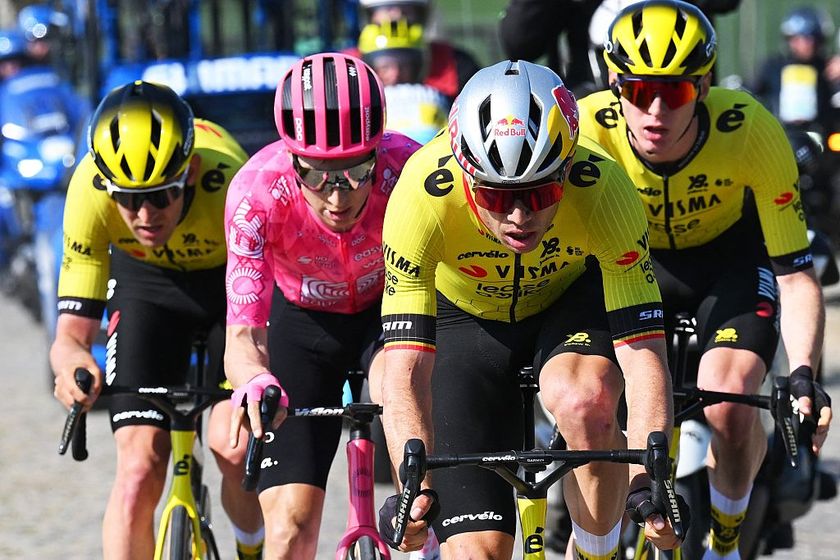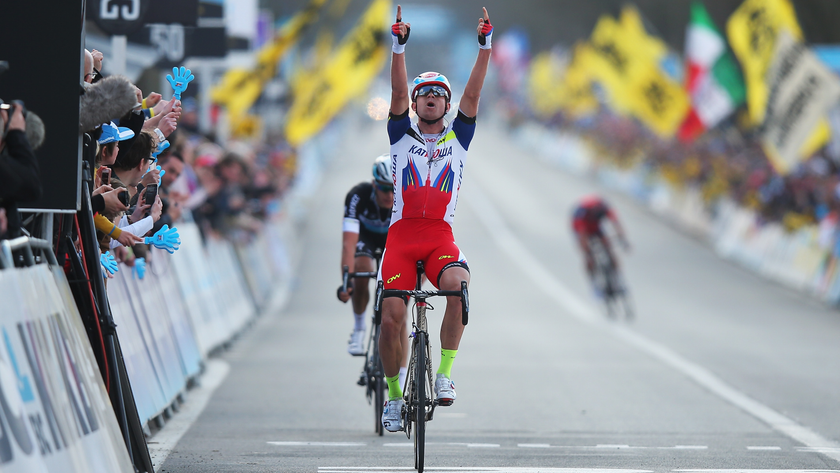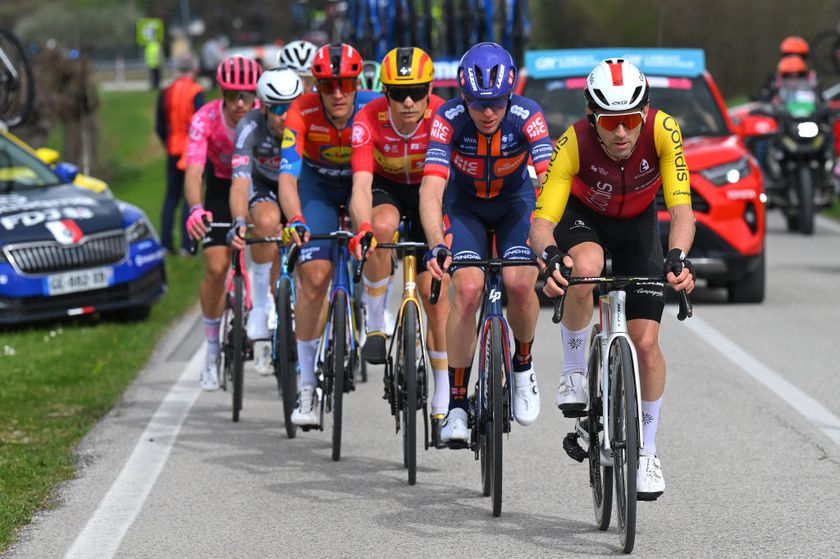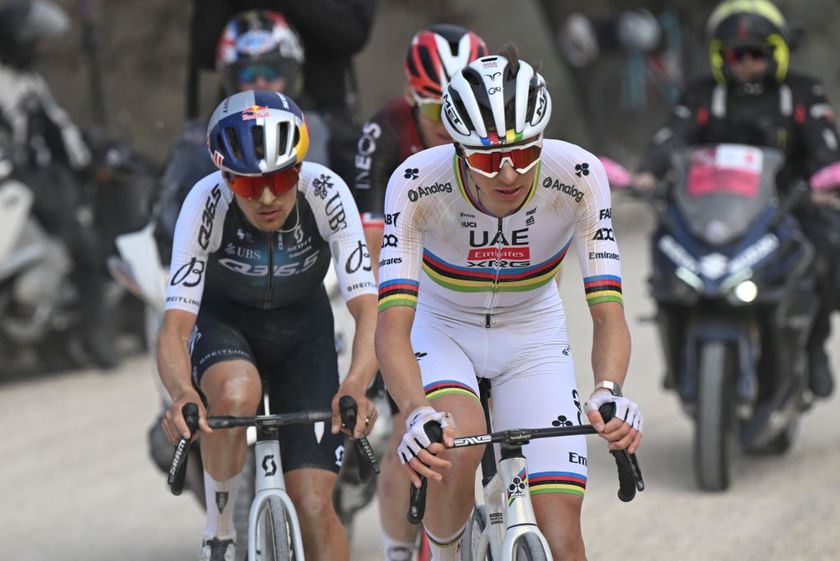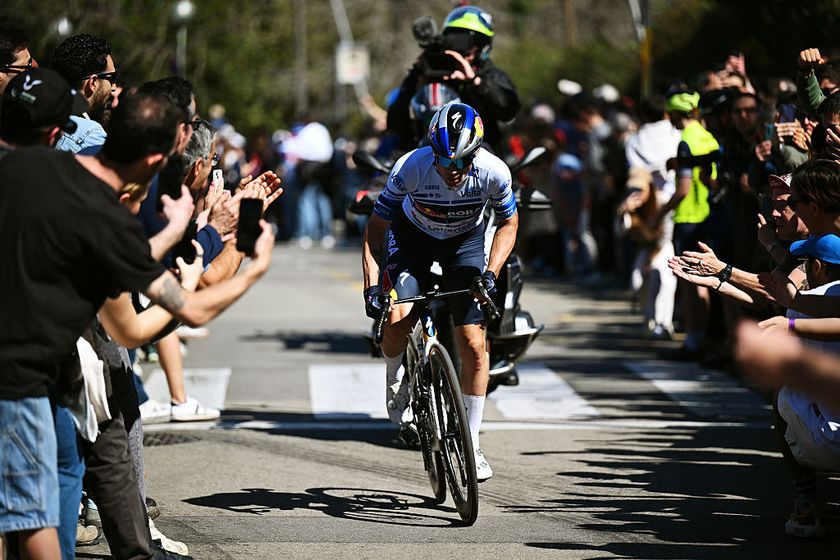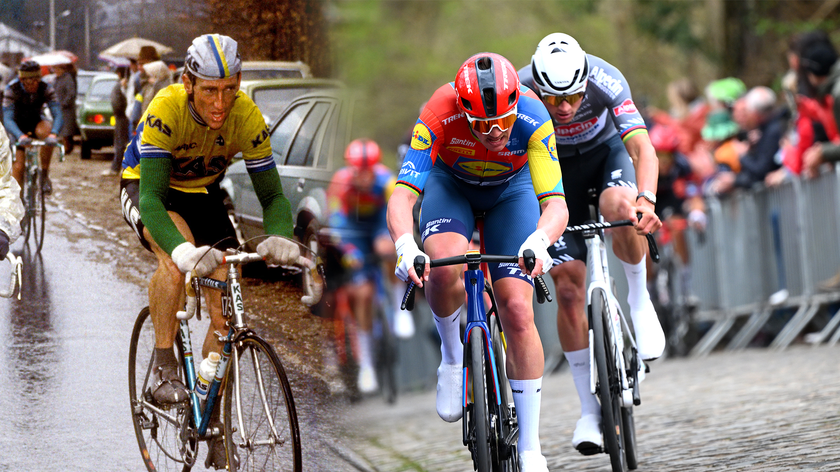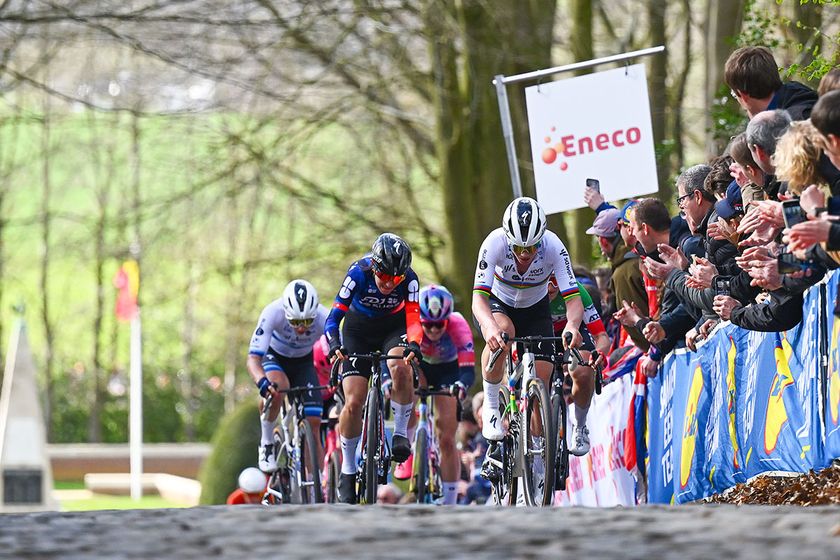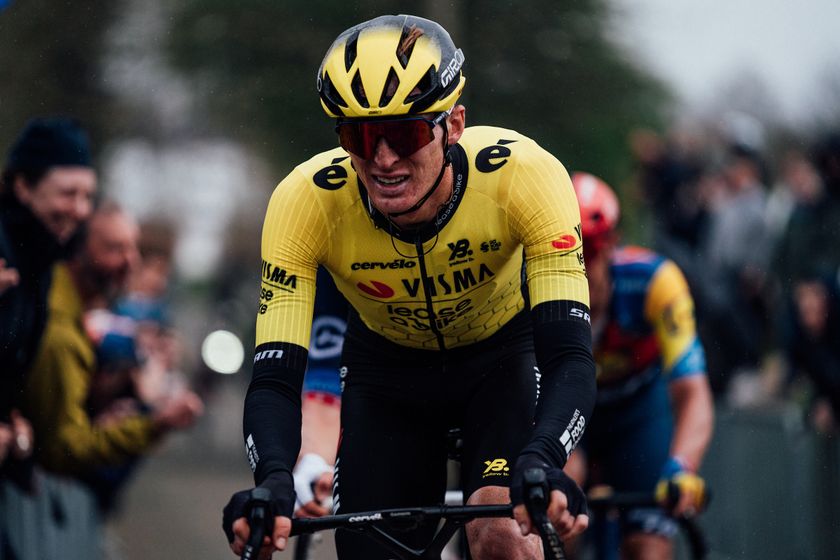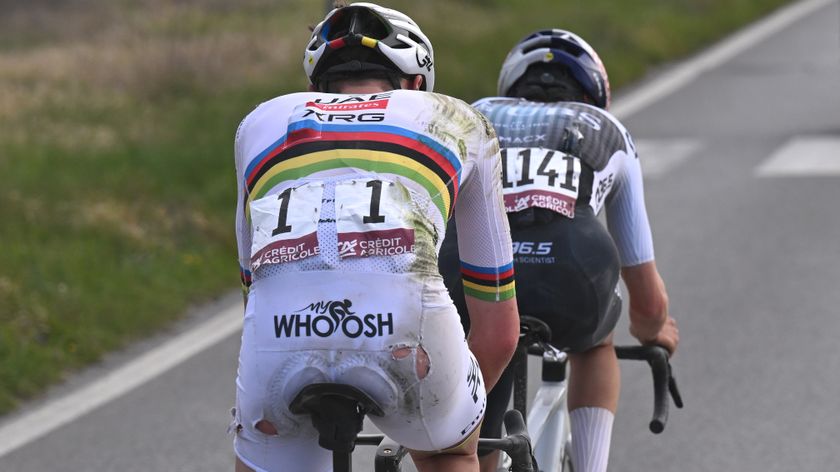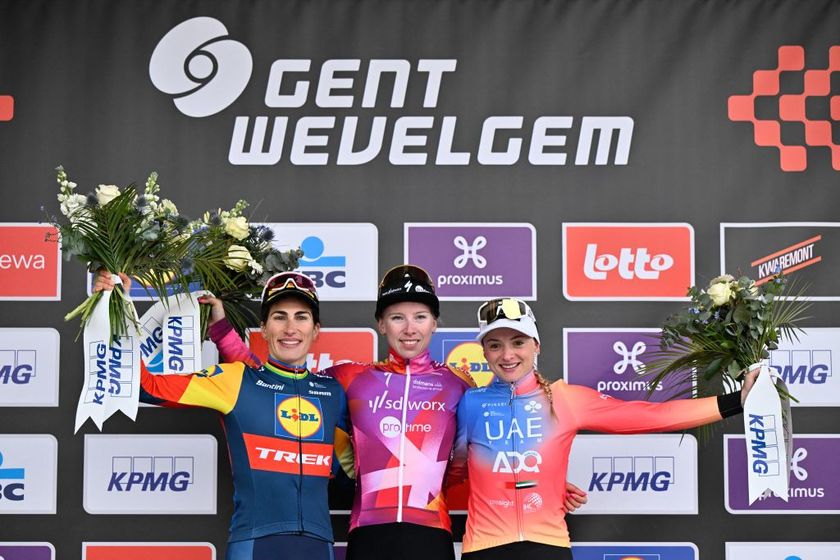Fitness questions and answers for June 17, 2008
Got a question about fitness, training, recovery from injury or a related subject? Drop us a line at...
Form & Fitness Q & A
Got a question about fitness, training, recovery from injury or a related subject? Drop us a line at fitness@cyclingnews.com. Please include as much information about yourself as possible, including your age, sex, and type of racing or riding. Due to the volume of questions we receive, we regret that we are unable to answer them all.
Carrie Cheadle, MA (www.carriecheadle.com) is a Sports Psychology consultant who has dedicated her career to helping athletes of all ages and abilities perform to their potential. Carrie specialises in working with cyclists, in disciplines ranging from track racing to mountain biking. She holds a bachelors degree in Psychology from Sonoma State University as well as a masters degree in Sport Psychology from John F. Kennedy University.
Jon Heidemann (www.peaktopeaktraining.com) is a USAC Elite Certified cycling coach with a BA in Health Sciences from the University of Wyoming. The 2001 Masters National Road Champion has competed at the Elite level nationally and internationally for over 14 years. As co-owner of Peak to Peak Training Systems, Jon has helped athletes of all ages earn over 84 podium medals at National & World Championship events during the past 8 years.
Dave Palese (www.davepalese.com) is a USA Cycling licensed coach and masters' class road racer with 16 years' race experience. He coaches racers and riders of all abilities from his home in southern Maine, USA, where he lives with his wife Sheryl, daughter Molly, and two cats, Miranda and Mu-Mu.
Kelby Bethards, MD received a Bachelor of Science in Electrical Engineering from Iowa State University (1994) before obtaining an M.D. from the University of Iowa College of Medicine in 2000. Has been a racing cyclist 'on and off' for 20 years, and when time allows, he races Cat 3 and 35+. He is a team physician for two local Ft Collins, CO, teams, and currently works Family Practice in multiple settings: rural, urgent care, inpatient and the like.
Fiona Lockhart (www.trainright.com) is a USA Cycling Expert Coach, and holds certifications from USA Weightlifting (Sports Performance Coach), the National Strength and Conditioning Association (Certified Strength and Conditioning Coach), and the National Academy for Sports Nutrition (Primary Sports Nutritionist). She is the Sports Science Editor for Carmichael Training Systems, and has been working in the strength and conditioning and endurance sports fields for over 10 years; she's also a competitive mountain biker.
Eddie Monnier (www.velo-fit.com) is a USA Cycling certified Elite Coach and a Category II racer. He holds undergraduate degrees in anthropology (with departmental honors) and philosophy from Emory University and an MBA from The Wharton School of Business.
Get The Leadout Newsletter
The latest race content, interviews, features, reviews and expert buying guides, direct to your inbox!
Eddie is a proponent of training with power. He coaches cyclists (track, road and mountain bike) of all abilities and with wide ranging goals (with and without power meters). He uses internet tools to coach riders from any geography.
David Fleckenstein, MPT (www.physiopt.com) is a physical therapist practicing in Boise, ID. His clients have included World and U.S. champions, Olympic athletes and numerous professional athletes. He received his B.S. in Biology/Genetics from Penn State and his Master's degree in Physical Therapy from Emory University. He specializes in manual medicine treatment and specific retraining of spine and joint stabilization musculature. He is a former Cat I road racer and Expert mountain biker.
Since 1986 Steve Hogg (www.cyclefitcentre.com) has owned and operated Pedal Pushers, a cycle shop specialising in rider positioning and custom bicycles. In that time he has positioned riders from all cycling disciplines and of all levels of ability with every concievable cycling problem. Clients range from recreational riders and riders with disabilities to World and National champions.
Current riders that Steve has positioned include Davitamon-Lotto's Nick Gates, Discovery's Hayden Roulston, National Road Series champion, Jessica Ridder and National and State Time Trial champion, Peter Milostic.
Pamela Hinton has a bachelor's degree in Molecular Biology and a doctoral degree in Nutritional Sciences, both from the University of Wisconsin-Madison. She did postdoctoral training at Cornell University and is now an assistant professor of Nutritional Sciences at the University of Missouri-Columbia where she studies the effects of iron deficiency on adaptations to endurance training and the consequences of exercise-associated changes in menstrual function on bone health.
Pam was an All-American in track while at the UW. She started cycling competitively in 2003 and is the defending Missouri State Road Champion. Pam writes a nutrition column for Giana Roberge's Team Speed Queen Newsletter.
Dario Fredrick (www.wholeathlete.com) is an exercise physiologist and head coach for Whole Athlete™. He is a former category 1 & semi-pro MTB racer. Dario holds a masters degree in exercise science and a bachelors in sport psychology.
Scott Saifer (www.wenzelcoaching.com) has a Masters Degree in exercise physiology and sports psychology and has personally coached over 300 athletes of all levels in his 10 years of coaching with Wenzel Coaching.
Kendra Wenzel (www.wenzelcoaching.com) is a head coach with Wenzel Coaching with 17 years of racing and coaching experience and is coauthor of the book Bike Racing 101.
Steve Owens (www.coloradopremiertraining.com) is a USA Cycling certified coach, exercise physiologist and owner of Colorado Premier Training. Steve has worked with both the United States Olympic Committee and Guatemalan Olympic Committee as an Exercise Physiologist. He holds a B.S. in Exercise & Sports Science and currently works with multiple national champions, professionals and World Cup level cyclists.
Through his highly customized online training format, Steve and his handpicked team of coaches at Colorado Premier Training work with cyclists and multisport athletes around the world.
Richard Stern (www.cyclecoach.com) is Head Coach of Richard Stern Training, a Level 3 Coach with the Association of British Cycling Coaches, a Sports Scientist, and a writer. He has been professionally coaching cyclists and triathletes since 1998 at all levels from professional to recreational. He is a leading expert in coaching with power output and all power meters. Richard has been a competitive cyclist for 20 years
Andy Bloomer (www.cyclecoach.com) is an Associate Coach and sport scientist with Richard Stern Training. He is a member of the Association of British Cycling Coaches (ABCC) and a member of the British Association of Sport and Exercise Sciences (BASES). In his role as Exercise Physiologist at Staffordshire University Sports Performance Centre, he has conducted physiological testing and offered training and coaching advice to athletes from all sports for the past 4 years. Andy has been a competitive cyclist for many years.
Michael Smartt (www.wholeathlete.com) is an Associate Coach with Whole Athlete™. He holds a Masters degree in exercise physiology, is a USA Cycling Level I (Elite) Coach and is certified by the NSCA (Certified Strength and Conditioning Specialist). Michael has more than 10 years competitive experience, primarily on the road, but also in cross and mountain biking. He is currently focused on coaching road cyclists from Jr. to elite levels, but also advises triathletes and Paralympians. Michael is a strong advocate of training with power and has over 5 years experience with the use and analysis of power meters. Michael also spent the 2007 season as the Team Coach for the Value Act Capital Women's Cycling Team.
Earl Zimmermann (www.wenzelcoaching.com) has over 12 years of racing experience and is a USA Cycling Level II Coach. He brings a wealth of personal competitive experience to his clients. He coaches athletes from beginner to elite in various disciplines including road and track cycling, running and triathlon.
Advice presented in Cyclingnews' fitness pages is provided for educational purposes only and is not intended to be specific advice for individual athletes. If you follow the educational information found on Cyclingnews, you do so at your own risk. You should consult with your physician before beginning any exercise program.
Advice on position
Speed wobbles
Reduced breathing and heart rate on Aciphex
Simvastatin and energy levels
Cleat shims
Tired after recovery
Side to side knee movement
Advice on position
Thank you for all of your advice over the years. I am coming back from injury and need some positioning advice. I got a full structural assessment from a sports MD and from several manual physios. It is a long history, but here are the details.
Sports MD diagnosed:
- MRI shows minor cartilage damage to left knee
- Ultrasound shows signal noise around right adductor, diagnosis tendinosis, but not tendinitis. My understanding is that this means some damage to tendon, short of tendinitis, possibly an old junior hockey injury.
Structurally the following were diagnosed by physios and MD:
- CT scan shows both legs equal total leg length.
- Weak core. (Working on it)
- Physios surprised by weakness of gluts generally (given that I raced bikes).
- Weak hamstrings generally (not surprised given that I raced bikes).
- ART done to following areas: right hip, both adductors (a lot was needed, more scar tissue on right side), and lower back, glut med and minimus right side were very knotted/adhesions.
- After ART the left side adductor and hip flexor is now tighter. MD thinks left side was original problem; right side wore itself out working around the problem.
- Weak VMO on left knee
- Bigger quads on right side
- Quad and hip flexor tightness both sides.
- Pelvis rotated forward. (Probable cause said to be tight quads, hip flexors combined with weak hamstrings)
- Flat left foot for twenty five years, now corrected with orthotics. Probably the cause of chondromalicia in left knee.
- SI joint misalignment.
- Some joint capsule tightness where right femur meets hip.
On the bike
- Despite equal leg length, pedal as if right leg is shorter (drop that hip and have more extended ankle on that side at 6 o'clock)
- Adductor cramps both sides, much more on the right. When adductors lock up sometimes the right hip flexor cramps/locks up, sometimes right hamstring as well.
- Produce more power with left leg, but am right side dominant and much bigger quad on right. Prior to injury the opposite was the case. When out of saddle produce more power with right leg though.
- Drop right hip. Seem to rotate right hip towards rear wheel a bit.
- Spin-scan shows lack of power produced across the top of pedal stroke of right leg.
- Rocking of hips despite conservative seat height.
- Retul fit shows the right knee not tracking straight. Under load it seems to come towards top tube and back out again. That is strange since left knee was problem originally, perhaps orthotics correct it and now biomechanical weakness in right hip/adductor area presents itself. Probably right hip problems come from adaptation to flat foot/chondromalacia in left foot and knee respectively.
- Left knee quad still weak, but that pedal stroke has better form than other side.
- Trouble engaging core and getting gluts to fire, especially on left side.
- When I concentrate on engaging core and straightening out hip rotation and drop I can feel gluts work, especially firing of left glut. But I just can't seem to hold the form for long even with a stronger core.
Should I shim up right cleat and move cleats back a bit too engage gluts? Anything else?
Just strugglin'
Steve Hogg replies:
Your athletic life doesn't sound like a lot of fun and thank you for the detailed info. If someone phoned me with a list like that I would be tempted to refuse to offer advice except in person because a lot of trial and error testing is likely to be needed to see how you respond to each change and the cumulative changes in position. When someone has such structural asymmetries, there is no 'road map' as everyone varies in their responses. However I am sensitive to your need to get back on the bike and will try to offer useful advice, here goes:
Speed wobbles
I wondered if you have had experience and could give advice on this subject. I am a 51 year old road cyclist and have raced in time trials for 34 years. On one occasion last Summer I was riding to the start of an evening event, which included a fast downhill stretch of approximately one and a half miles on a gently curving very exposed dual carriageway road. Halfway down the hill I began to experience a wobble through the front forks, which gradually got worse as I applied the brakes to control it. The 'wobble' eventually became very violent and I ground to a rather inelegant stop on the grass verge.
I had never experienced anything like it before, and the next time I went down the same hill I experienced the wobble again (on a different bike), although I suspect that this was more to do with nerves after my earlier experience. The net result is that I have now developed a fear of fast descents which is seriously affecting my riding, as I go out of my way to avoid them. I have also not raced this year as I am 'holding back' on the downhill stretches.
Peter Loader
Kingsteignton, Devon, England
Scott Saifer replies:
The front end of a bike is a sort of pendulum, and like any pendulum if you pump it at the right frequency, it will build up a large oscillation. The harmonic frequency of a bike depends on the geometry and weight distribution and also the speed as the front wheel acting as a gyroscope changes it's resistance to being steered as the speed of the gyroscope changes.
Reduced breathing and heart rate on Aciphex
I am a 45-year-old recreational sport level ride. I have been a long time sufferer of acid reflux and have tried all the proton-pump inhibitors (PPI). Protonix, Prilosec and Prevacid all gave me heart palpitations and on two occasions, sent me into arrhythmias.
Nexium made me feel sick to my stomach. Aciphex was the only one that didn't seem to have side effects. However, after having been on Aciphex for several years, I finally realized that it was probably the Aciphex that has been keeping me from being able to breath and reach my maximum heart rate on even moderately hard rides.
I have finally stopped taking it and am trying to manage my acid reflux and heart burn with diet and behaviour methods. It has been three weeks now since I have stopped and I have been feeling very good on the bike again. My breathing appears "normal" and while I have not been wearing my heart monitor, I seem to have much less difficulty on hills I have been struggling on for a long time.
Do you know of other reports of problems with athletes that are on PPI's? I'm really hoping I can finally stay of all these medications and get my cycling form back.
Vincent J. Amodeo
USA
Kelby Bethards replies:
That is a very interesting observation. I have not had anybody complain about such a problem with a PPI. I just read the very long list of possible, yet very rare, side effects and it mentions the arrhythmias and interestingly asthma as a rare possibility. It does not mention maximum HR reduction, but why would it? They don't test medications for athletic performance impairment.
Simvastatin and energy levels
I'm a 72 year old cyclist who has been cycling for 30 years. I've been across country twice recently and I do about 6000 miles per year.
I had two stents installed in my heart last July, and started Altace, Plavix and Simvastatin to prevent further damage to my heart. I felt great as a result of the treatment, and that lasted for the next 6 months, and then my doctor doubled my Simvastatin.
Since that time, my energy level has decreased noticeably, and I'm having trouble keeping up with the riders that I had no trouble with before the increase in Simvastatin.
My question is "Could the doubling of the dose affect my cycling or should I look elsewhere?"
I would ask my Cardiologist that question, but I never get a satisfactory answer from him about the meds I'm taking.
Joe
Kelby Bethards replies:
Let me start by saying, I will always defer to your cardiologist about your health, he/she knows your situation. Now, that being said, I do think it is your statin dose increase giving rise to some of your troubles.
Cleat shims
I have a fairly significant leg length difference of just under 1 inch, all of which is at the hip from Perthes. I've tried shims on my SPD-style mountain bike cleats, but the shims lifted the shoe off the pedal platform so that there was added instability - i.e. the cleat was raised above the level of the shoe tread so that the tread no longer touched the pedal. It wasn't a lot, just a few millimetres, but enough that there was some wobble back & forth.
I'd like to try the shims on my road shoes which have Look cleats/pedals. Do you know if I'll experience the same stability problems with the Look platform?
A second part to this question is whether I should even bother... in my road shoes I have one additional insole on my short side which is about 3mm, and my long leg has the cleat a couple of mm further back than my short leg. Otherwise there are no other corrective measures. I'm very comfortable on the bike and I don't have any pain/discomfort.
David Mackay
Scott Saifer replies:
On your MTB shoes you maybe able to improve the stability of the shimmed cleat by adding additional rubber or a second sole in the area of the cleat. You may need a real shoe-maker to help you attach it firmly enough
Tired after recovery
I'm a competitive CAT3 in my early 30's. I have been racing for 4 seasons and during the regular season I train 14 - 16 hrs a week and race pretty actively. Every 3-4 weeks I schedule a rest week where I ride less than 5 hrs at recovery pace, and include 2-3 days completely off the bike. I find that for several days following a rest week, I feel sluggish and unmotivated and have trouble riding at higher intensities. I'm wondering if this is typical, or am I taking too much time off the bike. After a few days of regular workouts I'm usually back to normal.
Ben Harris
Earl Zimmermann replies:
Overall your training levels seem to be in line with your peers and depending on the different types of events you are racing, it might be considered above average.
Sciatic nerve and cycling position
I am a 27 year old cyclist/racer (cat III road expert mtn) with some leg pain and numbness issues.
After months of frustration, I think I've discovered that the root of my problems comes from an old knee injury. In 2003 I had surgery to repair a torn medial meniscus in my right knee, and during the surgery they noticed that the cartilage below the kneecap was gone, so several holes were "poked" (don't know the medical term) in the kneecap to facilitate scar tissue regrowth. After the surgery I was able to return to racing and felt fairly good, but after two years I began to develop pain in my right hamstring during squash and cycling. I recently began seeing a PT who diagnosed the main problem as an inflammation of the sciatic nerve. After seeing him a few times the injury is getting better and I'm able to ride again mostly pain free, though the stretches he's prescribed to me are painful and sometimes especially after a hard ride there is significant stiffness and soreness in the right leg.
Yesterday on a ride I was doing a rather steep and long climb at close to maximum effort, and began to experience numbness in my left leg on the outside of my glut, and also some numbness in my left toes.
I did experience a very similar sensation last year during a 40k TT, also in the left leg, which I attributed to not being accustomed to the TT position during hard effort.
My questions can be boiled down to this: Is there a specific positioning aspect that affects the sciatic nerve? I have never been professionally fitted, nor have I ever felt truly comfortable on the bike, but I don't know if professional fitting is an option for me (don't know of anyone in the area and cost issues).
Some additional information:
On a few occasions during especially hard/hot races/rides I have experienced cramping, and it is almost always in my right hamstring exclusively.
I am a squash pro by trade, and mostly plant on my right foot during games, which leads to some strength imbalances in my legs. (This was also the cause of my original knee injury).
I do a lot of core strengthening and I don't have any lower back pain.
My right leg is effectively shorter than my left according to my PT, which he thinks will correct with further treatment. He also says that my right arch is higher to correct for this, but he has watched my on the bike and says there are no blatant symmetry issues.
Any suggestions you might have would be greatly appreciated, I am a big fan of the Form and fitness column!
Pete Avitable
Steve Hogg replies:
You have answered your own question. That chronically tighter right hamstring post ride suggests that your functionally shorter right leg is overextending. The cramping you have experienced in the right hamstring indicates over enlistment, all most certainly because of over extension in an already tight muscle group. When subject to pain a body will autonomically protect itself. Compensatory measures only shift the load elsewhere; in this case probably the left side; they don't solve the problem.
David Fleckenstein replies:
There are a couple of issues that must be addressed/further examined.
Side to side knee movement
I am 38 year old male, who occasionally races. I ride about 200+ miles a week with a lot of climbing (4k+ per ride).
I have recently noticed that when I pedal both of my knees move side to side at the top of the stroke. I have also read that over time this can lead to knee problems. I have been fitted to my bike by my local shop though I am guessing they either did not notice the issue or did not know how to fix it. I am curious what I can do about it?
Sam
Steve Hogg replies:
Is it fair to say that you are tight in the hips and lower back? If it is, that is the root cause. A seat that is too low or too far back (which yours may or may not be) can exaggerate the side to side movement.
David Fleckenstein replies:
There are couple of issues that can lead to the "drifting knee" and, interestingly, the knee is not the cause.
